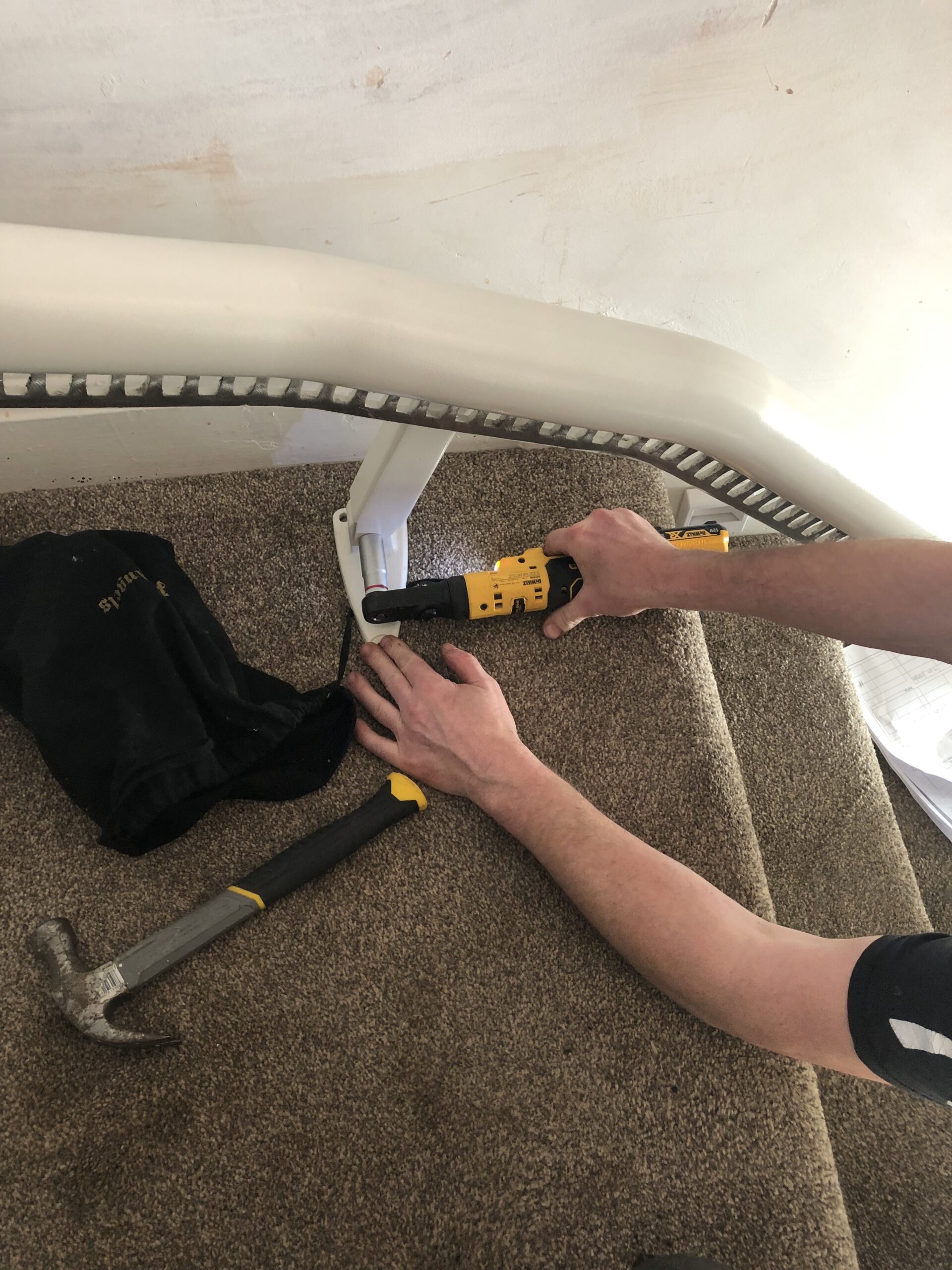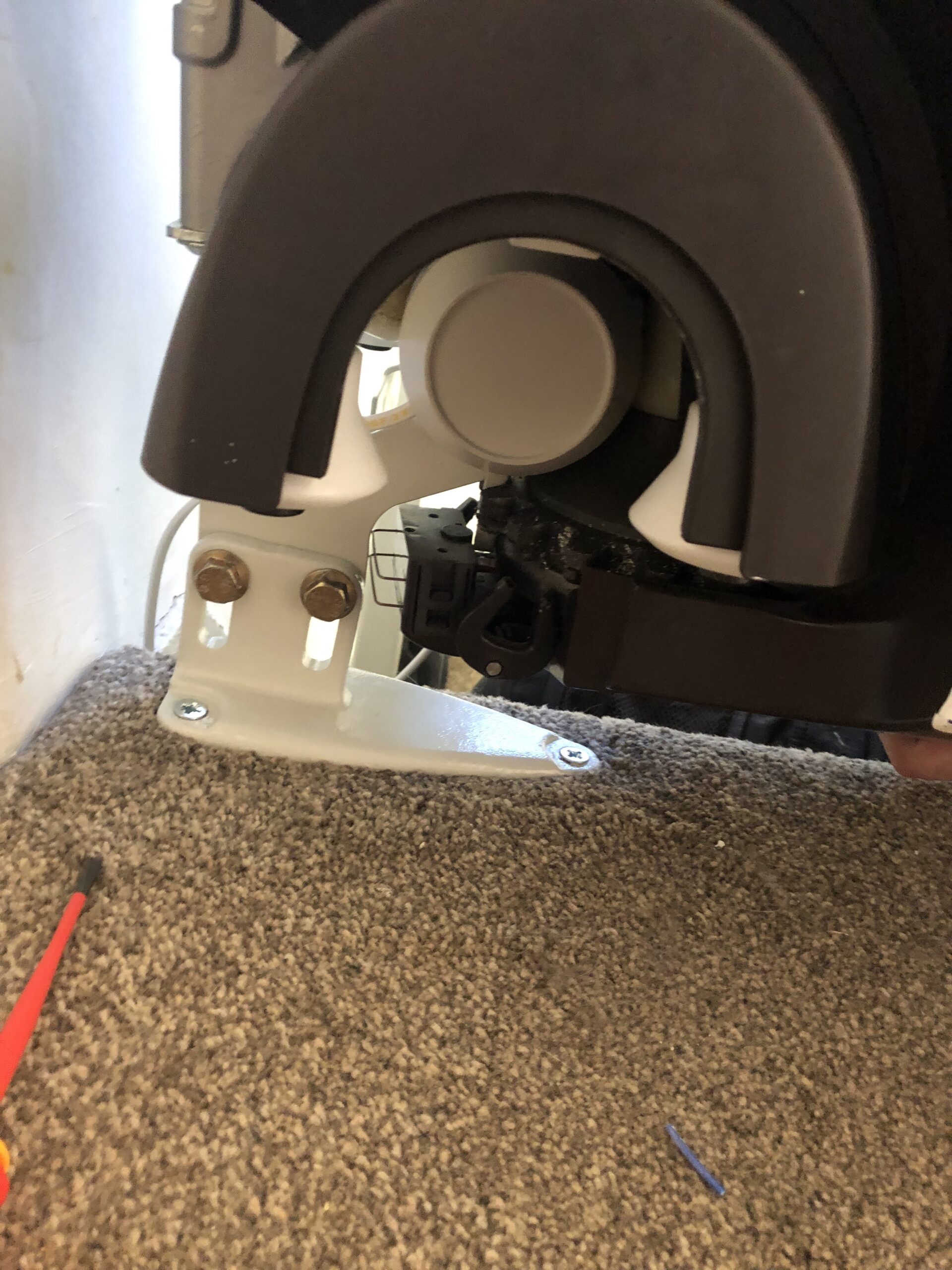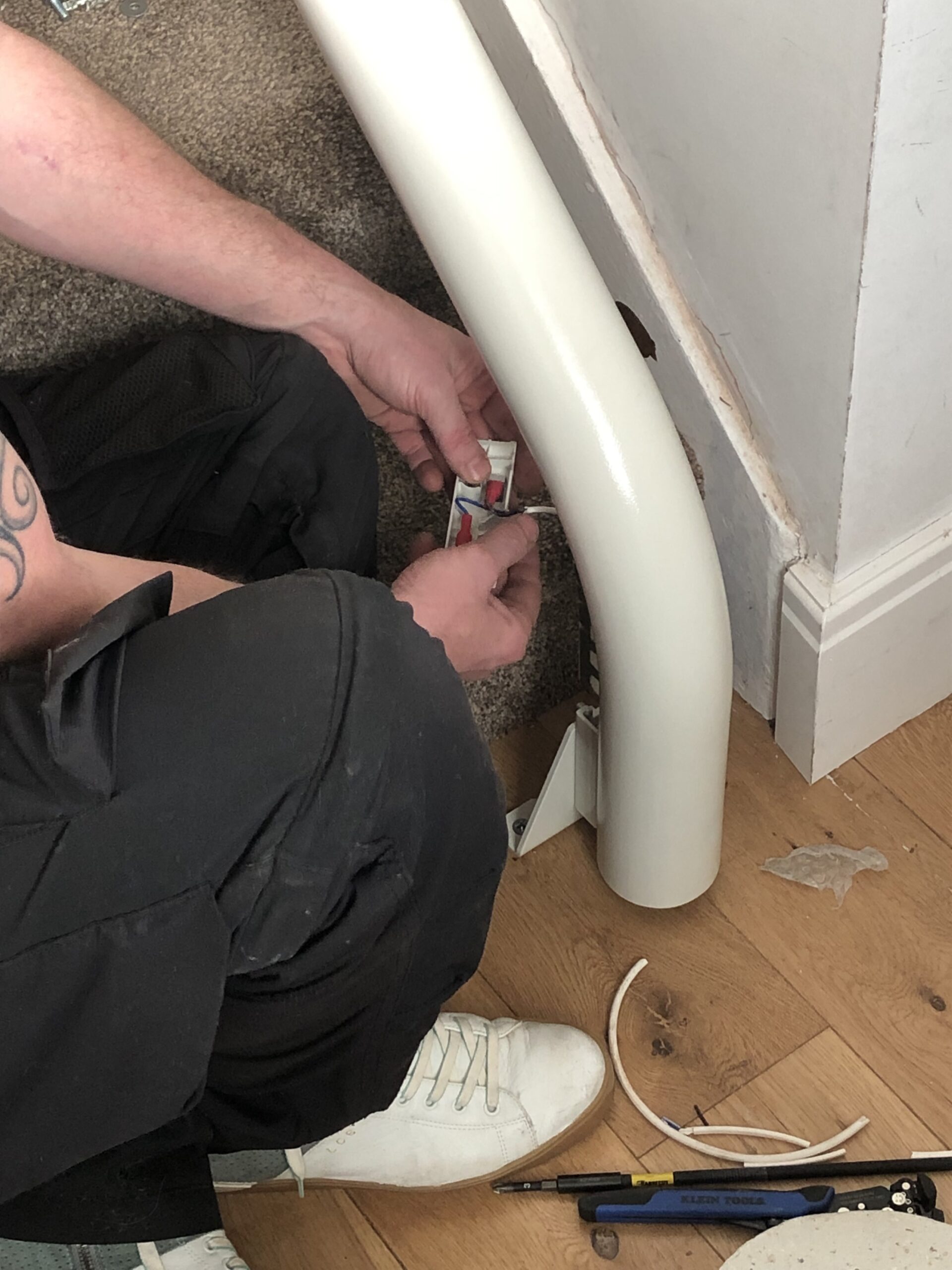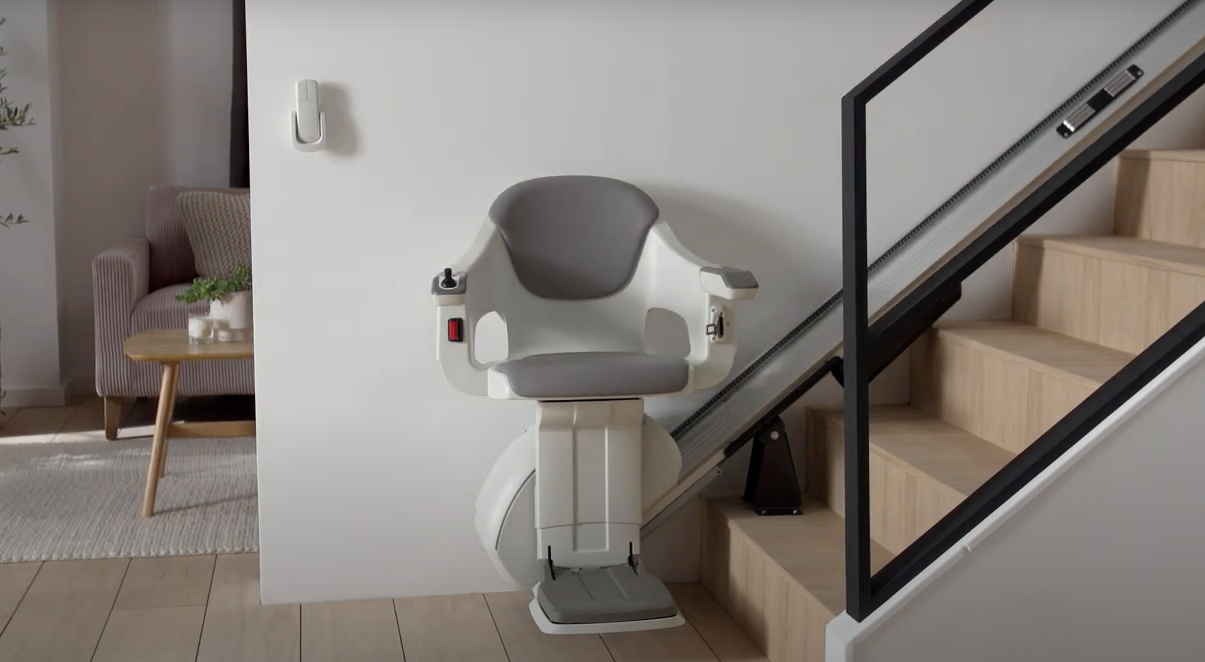
If you’re in the market for a stairlift you might be wondering if stair lifts damage stairs? This is a common query for those who are considering purchasing or especially renting a stairlift.
A stairlift runs on a rail which is attached to the staircase, not the wall. This is often another question which arises when someone is looking for a stairlift. So firstly your wall will not be damaged by a stairlift because there’s no weight loaded on to the wall. All the weight of a stairlift is taken by the staircase.
This then brings up the question “Do Stair Lifts Damage Stairs?”

Have a look at this picture and you’ll see the “feet” of the stairlift rail. These feet (brackets) keep the stairlift rail elevated from the staircase. There’s a number of these brackets on a stairlift rail which distribute the weight of the stairlift evenly across the staircase.
Do Stair Lifts Damage Stairs – Carpet?
The rail brackets are screwed directly into the wood on your staircase, through your carpet. However, the screws are very thin. So you’re unlikely to see any damage to your carpet if the rail is eventually removed. In most cases you won’t see holes in the carpet. If you do they can be easily brushed away because the screws used are so thin.

Over time, the use of your stairlift will leave indentations from the rail “feet” on the carpet. This is from the weight of the stairlift being used. The longer you have your stairlift for, the more you are likely to see these indentations appear upon removal of the stairlift.
Still, this is only like removing a bookshelf which has been sitting on a carpet for a long period of time.
Do The Screws Damage The Stair Treads?
There’s no structural damage to your staircase from the installation of a stairlift. After removing the stairlift you will find a few small holes in the staircase treads where the brackets have been attached, which go through the carpet – although these can be hard to find on the carpet, they may show superficially.

If you remove the carpet you’ll see them in the stair treads, and these can easily be filled.
Do Screws Damage Floorboards?
Depending on the rail type of your stairlift, it may sit on the floor at the base of your staircase. This screws into the floor.

If you have a furnished floor, you might want to consider the screws which may be going into the floor. It a carpet covers the floor, it’s less of a problem. If this is an issue, you can avoid the problem by using a different type of stairlift rail.
In the image below is a homeglide stairlift with a retractible rail. The base of the rail adjusts to leave space on the ground floor. This is for when there’s a doorway or corridor you want to keep easily accessible. So if you have a nicely furnished floor, this may be a consideration if you don’t want screws going through the floorboards or wood veneer.

Summary
So, do stair lifts damage stairs? While there may be some superficial screw holes from installing a stairlift, there is no structural damage done through the installation of a stairlift. The most you will see are small screw holes. These are usually fairly invisible on the carpet because the screws are thin enough to push through the carpet thread without causing damage.
The weight of a stairlift is shared across the staircase through a number of brackets which the rail sits on. Over time, these brackets will leave indentations from the weight on your carpet. This is only like any other piece of furniture which sits on a carpet. After the removal of a heavy piece of furniture there are marks where it was sitting.
Depending on the model of your stairlift and the rail in particular, you may have screw holes in the floor at the base of the staircase. This will leave a few small holes where the screws are placed – usually 2-3 depending on the bracket, if your stairlift is eventually removed.
Overall, a stairlift should be hugely beneficial, giving your the ability to remain independent in your home. If you’re only using a stairlift temporarily, this becomes more of an issue than if a stairlift is a perminant fixture.


